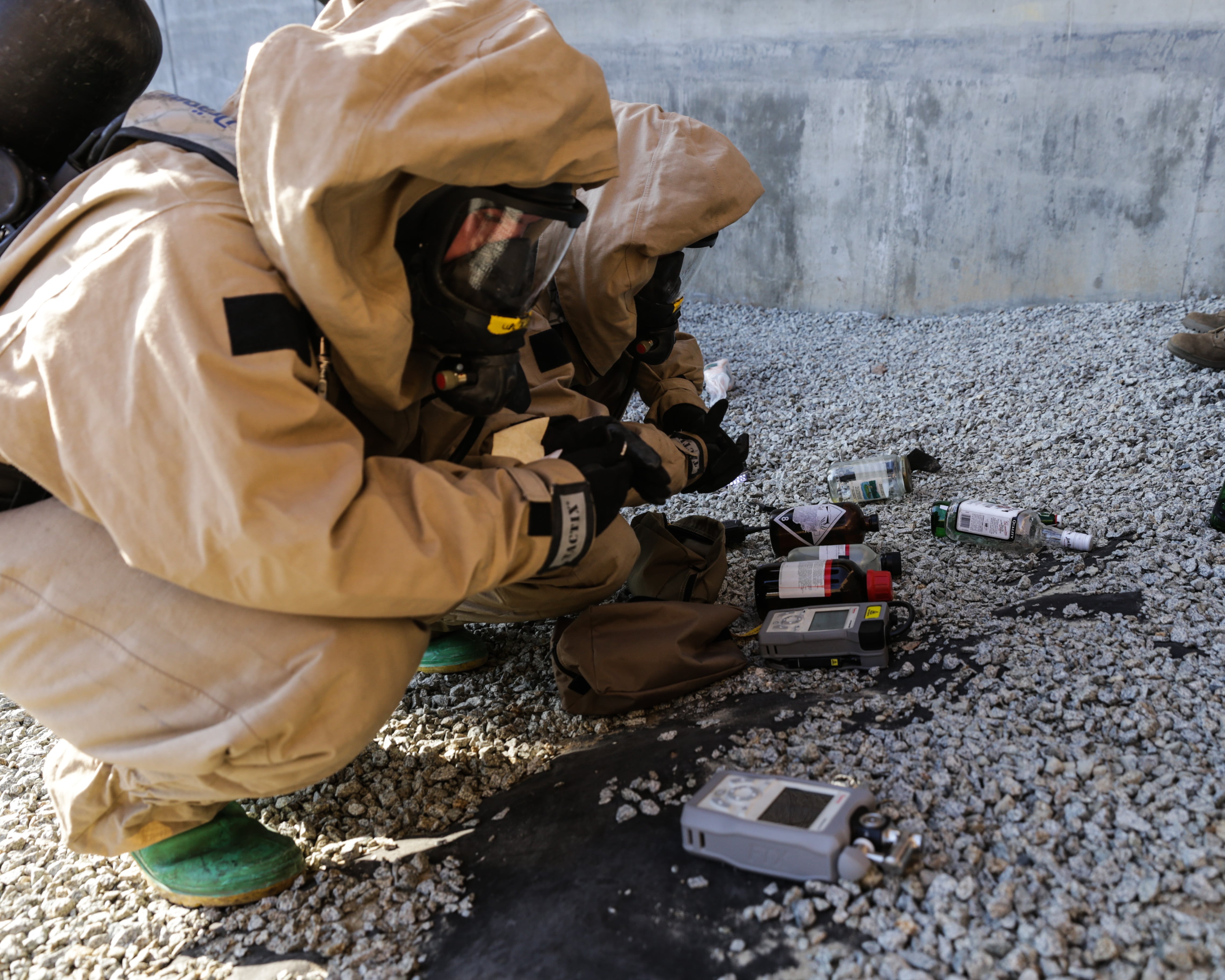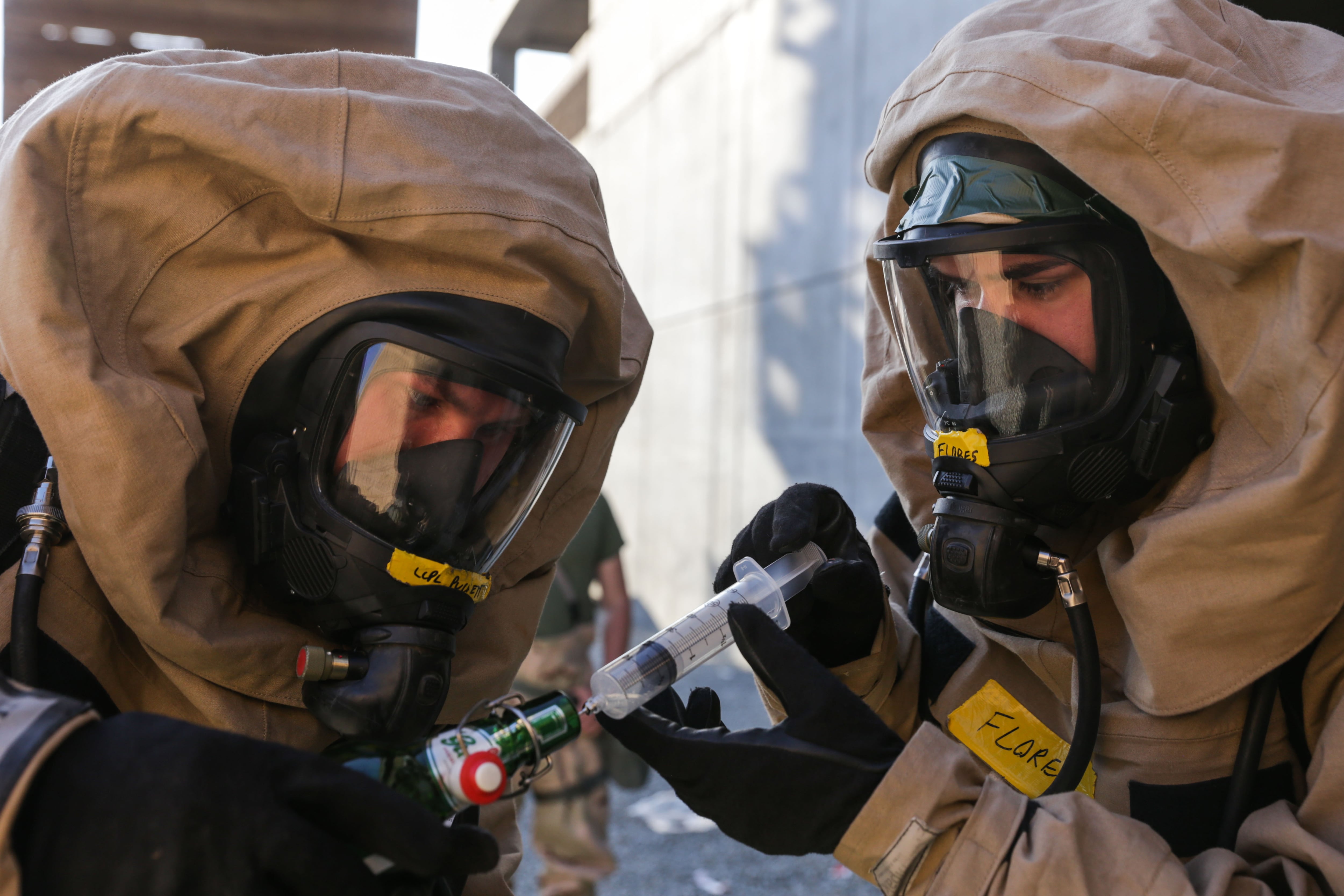Should terrorists strike with a radioactive weapon at home or abroad, Marines are set to be some of the first the first to respond ones in.
A chemical, biological, radiological and nuclear defense team from the 11th Marine Expeditionary Unit took up specialized training last month in the middle of the Nevada desert to learn how to respond to a "radiological event."
Ten Marines and a corpsman went through the weeklong course at the Nevada National Security Site, the epicenter of America's nuclear testing during the Cold War, Chief Warrant Officer 3 Kevin Quigley, 11th MEU's CBRN defense officer, told Marine Corps Times.
"In a worst-case scenario it's a really, really bad day," he said. "If a dirty bomb went off or a tactical nuclear detonation, we'd be able to go in now with a better understanding of radiological search and survey techniques."
Immediately after such an attack, the Marines would deploy to take readings and samples, and identify what exactly happened and the scope of the attack, he said. Commanders would then use this intel for force-protection measures in follow-up actions.
The training, held alongside 75 civilian emergency first responders, is designed ultimately to save Marines’ and civilians’ lives overseas, he said.
The detonation of a "dirty bomb" — conventional explosives laced with radioactive material — is designed to spread fear and chaos rather than massive loss of life and physical destruction, making it the ideal weapon for terrorists.

Marines with the 11th MEU organize evidence to be tested for possible contamination.
Photo Credit: Lance Cpl. Devan Gowans/Marine Corps
"A dirty bomb is not a ‘weapon of mass destruction’ but a ‘weapon of of mass disruption,’ where contamination and anxiety are the terrorists’ major objectives," according to the U.S. Nuclear Regulatory Commission.
There has been a rise in the threat of such an attack Such an attack has become an increasing threat less the stuff of fiction and more like a real-life scenario as terrorist organizations have become increasingly interested in their potential, the USNRC says.
In the late 1990s, Chechen separatists tried and failed to set off dirty bombs in a Moscow park and on a commuter train outside Grozny. Following their lead, al-Qaida associates have planned on several occasions since 9/11 to acquire material and launch such attacks, including an alleged 2002 plot by New York native José Padilla to strike Chicago.
More recently, Reuters broke the news in July 2014 that the Islamic State group seized nearly 88 pounds of uranium when it overran Mosul University in northern Iraq. Though not the weapons-grade uranium that could be used to make a nuclear bomb, it was sufficient material for a dirty bomb, according to Newsweek.
If the Islamic State or another group successfully detonated a dirty bomb overseas, a deployed MEU would likely be called in as first responders, Quigley said.
"This is a skill that the MEUs are going to need, because it's not a question of if it's going to happen any more, it's a question of when," he said.

Marines test for possible contamination during a CBRN response training scenario.
Photo Credit: Lance Cpl. Devan Gowans/Marine Corps
Through the training — held at the Counterterrorism Operations Support Center for Radiological/Nuclear Training — the Marines received in-depth instruction in radiation, detection instruments, survey and sampling techniques as well as casualty evaluation, treatment and decontamination.
The key aspect, however, was its real-world application: For 50 years into the 1990s, the U.S. military used the site to conduct its nuclear weapons testing, leaving a radioactive residue that still reads hot today. That allowed the Marines to train with real measurements, said Staff Sgt. Robert Monk, 11th MEU's CBRN chief.
"We actually got to go out to ground-zero sites where they had dropped the nukes," he said. "We got to take live samples and readings of the areas, so we were actually getting live radiological detection and a first-hand observation of the aftermath of a nuclear explosion."
For example, the training site Area 1, 85 miles northwest of Las Vegas, was the drop site for the 1955 Apple-2 atomic bomb test, a 29-kiloton yield which iconically obliterated a mock American town.
Being in this historic, radioactive environment made for an incredible training experience, said Cpl. Matthew Frame, 11th MEU's CBRN defense noncommissioned officer in charge.
"There's not some guy standing over your shoulder whispering in your ear what your detector is [notionally] saying," he said. "From my level, this was the best training that I've gotten for this."





